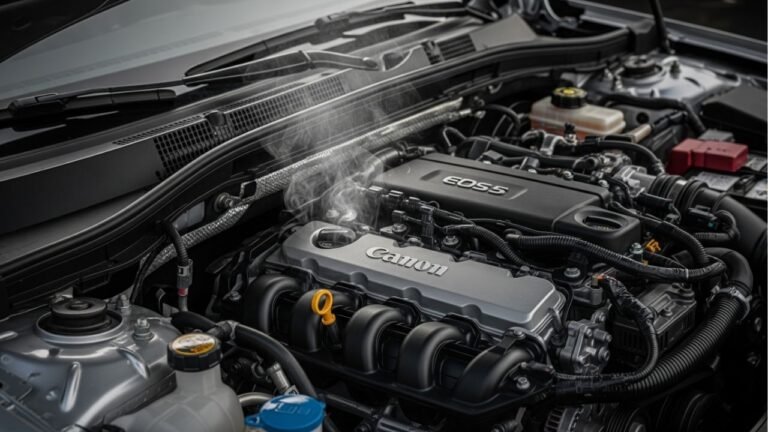How to Change Oil in Your Honda Civic: Step-by-Step Guide

Owning a Honda Civic comes with a lot of pride. It’s reliable, efficient, and drives like a dream. But even the best cars need proper care to keep running smoothly. One of the most essential maintenance tasks is knowing how to change oil in your Honda Civic. Many car owners shy away from doing it themselves because it sounds technical or messy. But trust me, it’s simpler than it seems. By learning this skill, you not only save money on mechanic fees but also gain confidence in handling your car’s basic maintenance. Plus, the satisfaction of driving away knowing you took care of your engine yourself is unmatched. In this guide, we’ll walk through every step, from choosing the right oil to cleaning up after the job, ensuring your Honda Civic stays in peak condition.
In This Article
- 1 Why Regular Oil Changes Matter
- 2 Factors to Consider Before Changing Oil
- 3 Tools You’ll Need
- 4 Park Your Car and Let the Engine Cool
- 5 Locating the Oil Drain Plug and Filter
- 6 Removing the Oil Drain Plug
- 7 Changing the Oil Filter
- 8 Choosing the Appropriate Oil
- 9 Adding the New Oil
- 10 Safely Collecting and Disposing of Used Oil
- 11 Replacing the Oil Drain Plug
- 12 Cleaning Up After the Oil Change
- 13 Tips for Maintaining Your Honda Civic Between Oil Changes
- 14 FAQs About Changing Oil in a Honda Civic
- 15 Conclusion
Why Regular Oil Changes Matter
Imagine your engine as the heart of your car. Just as blood keeps our body alive, engine oil keeps the engine healthy. Oil lubricates all moving parts, reduces friction, and prevents wear and tear. Skipping or delaying oil changes can cause sludge build-up, overheating, and eventually serious engine damage. For a Honda Civic, maintaining proper oil levels is particularly important because these engines are finely tuned for efficiency. Not only does regular oil replacement enhance performance, but it also improves fuel economy. Think of it as giving your car a refreshing spa treatment—it keeps everything smooth, clean, and efficient. By changing the oil at recommended intervals, you’re investing in longevity. So, instead of waiting for warning lights or strange engine noises, taking proactive steps will save both your wallet and your peace of mind.
Factors to Consider Before Changing Oil
Before diving into the oil change process, there are a few essential factors to keep in mind.
-
Viscosity: This indicates the thickness of the oil. For example, 5W-30 is a common grade for Honda Civics. The first number (5W) tells you how it flows in cold temperatures, while the second number (30) is how it behaves when the engine is hot. Choosing the right viscosity ensures proper lubrication in all conditions.
-
API Certification: The American Petroleum Institute (API) label ensures the oil meets industry standards. Using certified oil guarantees compatibility and performance for your Honda Civic.
-
Manufacturer Recommendations: Always follow Honda’s guidelines for oil type and replacement intervals. Some oils are specifically formulated for Civic engines, and adhering to these instructions helps maintain warranty coverage and engine health.
Here’s a quick reference table for oil viscosity and temperature:
| Viscosity | Temperature |
|---|---|
| 5W | Cold |
| 30 | Hot |
By keeping these factors in mind, you’ll ensure your engine gets the proper care every time.
Tools You’ll Need
Changing your Honda Civic’s oil doesn’t require a garage full of tools. You can get everything ready in under 10 minutes. Here’s a practical list:
-
Wrench – for loosening the oil drain plug.
-
Oil filter wrench – to remove and install the oil filter without damage.
-
Oil drain pan – to catch used oil and avoid messy spills.
-
Funnel – for smooth pouring of new oil into the engine.
-
Rags or paper towels – to wipe spills and clean the work area.
Having the right tools simplifies the process and reduces frustration. Nothing is more annoying than finishing an oil change only to realize your tools were insufficient. I always keep a small kit in my garage dedicated solely to oil changes. It saves time and makes the task feel professional, even if you’re doing it for the first time. Remember, preparation is half the battle.
Park Your Car and Let the Engine Cool
Safety comes first. Always park your Honda Civic on a level surface before starting the oil change. This ensures accurate oil drainage and prevents accidental spills. Never attempt to change oil immediately after driving; the engine can be scorching hot. Allow it to cool for 10-15 minutes. During this time, gather all your tools and prepare the workspace.
I personally like to keep a pair of gloves handy because old oil can stain skin and clothes. By taking a few safety precautions—level surface, cool engine, and gloves—you’re preventing accidents and ensuring a smooth workflow. Think of it like prepping your kitchen before cooking; a clean, organized setup makes the whole process more enjoyable and efficient.
Locating the Oil Drain Plug and Filter
Next, you’ll need to locate the oil drain plug and oil filter. These are essential components for a successful oil change. The drain plug is usually found at the bottom of the engine, though some Honda Civic models may require slightly different access points. Consult your owner’s manual for exact locations.
The oil filter is often nearby and needs replacement each time you change oil. Identifying it correctly prevents damage to the engine and ensures a smooth workflow. A common mistake is confusing other engine components with the filter—so take your time. Once you’re confident about their location, you’re ready to move to the draining step. Having these parts clearly identified at the start reduces stress and mistakes, especially if it’s your first DIY oil change.
Removing the Oil Drain Plug
Now comes the exciting part: draining the old oil. Place your oil drain pan directly under the plug to catch all the oil. Using a wrench, slowly loosen the plug. Be prepared for some resistance; it’s normal since the plug is designed to be tight. Once loosened, carefully remove the plug and let the oil flow into the pan.
Patience is key here. Let the engine drain completely to avoid leaving dirty oil behind, which can compromise the new oil’s effectiveness. Watching the used oil flow out can feel strangely satisfying—it’s like letting go of old clutter to make room for something fresh. After the oil has drained, inspect the plug for damage and set it aside. Soon, this humble piece will be replaced, but for now, it’s a vital step in maintaining your Honda Civic’s engine health.
Changing the Oil Filter
The oil filter is the next critical component. Start by using an oil filter wrench to loosen and remove the old filter. Take note of the gasket on the old filter; sometimes it sticks to the engine, which can cause leaks if not removed. Once cleared, it’s time to install the new filter.
Before placing it, apply a thin layer of fresh oil on the gasket. This ensures a snug fit and prevents leaks. Screw the filter in place, tighten it by hand, and give it an extra three-quarters turn with the wrench. A properly installed filter is essential for optimal oil circulation and engine protection. Think of it like changing a water filter at home; the new one ensures clean, smooth flow, which keeps everything running perfectly.
Choosing the Appropriate Oil
Selecting the right oil for your Honda Civic is more than just picking any bottle off the shelf. The type and grade of oil you choose directly affect engine performance, longevity, and fuel efficiency. Begin by consulting your Honda Civic owner’s manual, which specifies recommended oil types and viscosity grades. For most Civics, 5W-30 is a common choice, but double-check your model and year.
It’s also important to consider the API certification. Certified oils meet industry standards, ensuring proper protection against wear, sludge, and deposits. While synthetic oils are generally more expensive, they often provide better performance in extreme temperatures and last longer. Think of it like choosing the right shoes for a long hike—the correct fit and quality make all the difference. By using recommended oil, you’re giving your Civic the precise care it needs to keep running smoothly for years.
Adding the New Oil
Once the old oil is drained and the new filter is in place, it’s time to refill the engine with fresh oil. First, locate the oil filler cap on top of the engine and remove it. Place a funnel in the opening to avoid spills, then slowly pour in the recommended amount of oil. Take your time—pouring too quickly can lead to splashes and wasted oil.
After filling, remove the funnel and replace the cap securely. Next, check the oil level using the dipstick. Wipe it clean, insert it fully, then remove it again to see where the oil sits. The level should fall between the minimum and maximum marks. If it’s low, add a little more oil and recheck. Correct oil levels are crucial because too little can starve the engine, while too much can cause pressure issues and leaks. Think of this as adding water to a plant—you want just the right amount to nourish without drowning it.
Safely Collecting and Disposing of Used Oil
Proper disposal of used oil is a critical, often overlooked step. Never pour old oil down the drain or into the environment—it’s toxic and harmful to ecosystems. Instead, store it in a sealed container designed for oil and keep it upright to prevent spills.
Next, locate a recycling center or a local service station that accepts used oil. Many auto parts stores and municipal centers have programs for proper disposal. By responsibly recycling, you protect the environment and contribute to cleaner communities. Personally, I mark my used oil containers with the date and type of oil, making it easy to track and drop off. Think of it as a small act of responsibility that extends beyond your car, making a positive impact on the planet.
Replacing the Oil Drain Plug
After the oil has drained completely, the next step is to replace the oil drain plug. Ensure the plug and surrounding area are clean, then thread it back in place. Use a wrench to tighten it securely, but avoid over-tightening—it could strip the threads or damage the pan.
Once installed, check for leaks around the plug. If oil seeps out, gently retighten until it stops. This simple yet crucial step ensures the new oil remains contained and circulates properly throughout the engine. A secure drain plug is like the cork in a wine bottle—it keeps everything sealed and prevents unnecessary mess or damage.
Cleaning Up After the Oil Change
Oil changes are inevitably messy, but cleaning up properly protects your engine and workspace. Start by wiping off any spilled oil around the filter, drain plug, or filler cap using clean rags or paper towels. Inspect the surrounding engine area for residual oil and remove it carefully.
Keeping your workspace clean also prevents contamination if you need to handle other fluids in the future. Personally, I like to do a quick check under the car to ensure no drips remain on the floor. Cleanliness isn’t just about aesthetics—it also signals that your maintenance was thorough and professional. Think of it as the finishing touch to a job well done.
Tips for Maintaining Your Honda Civic Between Oil Changes
Changing the oil is just one part of keeping your Honda Civic in peak condition. Here are some additional tips to maximize engine health:
-
Monitor Oil Levels Regularly: Even if you recently changed oil, check levels monthly.
-
Listen for Engine Noises: Unusual sounds can indicate low or degraded oil.
-
Check for Leaks: Periodically inspect under the car and around the filter for signs of leakage.
-
Use Recommended Oil: Avoid mixing brands or grades that aren’t approved for your Civic.
-
Follow the Maintenance Schedule: Adhering to Honda’s service intervals prevents wear and keeps your warranty intact.
By staying proactive, your Civic will run smoothly, feel responsive, and last longer. Regular attention is like giving your car small doses of care—it compounds into years of reliable driving.
FAQs About Changing Oil in a Honda Civic
1. How often should I change the oil in my Honda Civic?
Honda recommends changing oil every 5,000 to 7,500 miles, depending on your driving habits and oil type. Always check your owner’s manual for exact intervals.
2. Can I use synthetic oil in my Civic?
Yes, synthetic oil is compatible and often preferred because it resists breakdown, provides better lubrication, and works well in extreme temperatures.
3. What happens if I overfill the engine with oil?
Too much oil can cause foaming, increased pressure, leaks, and even engine damage. Always measure carefully and check with the dipstick.
4. Can I recycle used motor oil at any auto shop?
Many service stations and auto parts stores accept used oil. Municipal recycling centers may also provide proper disposal options.
5. Is it safe to change oil myself without professional help?
Absolutely! With the right tools, safety precautions, and instructions, DIY oil changes are straightforward and rewarding.
6. How do I know if the oil filter is installed correctly?
The filter should be hand-tightened, with a thin coat of oil on the gasket. Double-check for leaks after running the engine briefly.
7. Can I use a different brand of oil filter than recommended?
While some aftermarket filters are compatible, it’s best to use Honda-approved filters for optimal engine protection and warranty compliance.
Conclusion
Learning how to change oil in your Honda Civic is empowering. It saves money, keeps your engine healthy, and gives you peace of mind knowing your car is properly maintained. From gathering tools and choosing the right oil to safely disposing of used oil, each step contributes to the longevity and performance of your Civic.
Remember, this is more than a mechanical task—it’s a way to bond with your car and take responsibility for its well-being. By keeping up with regular oil changes, monitoring oil levels, and following Honda’s recommendations, you ensure that your Honda Civic continues to run smoothly for years. So grab your tools, follow these steps, and enjoy the satisfaction of a job well done. Happy driving!






